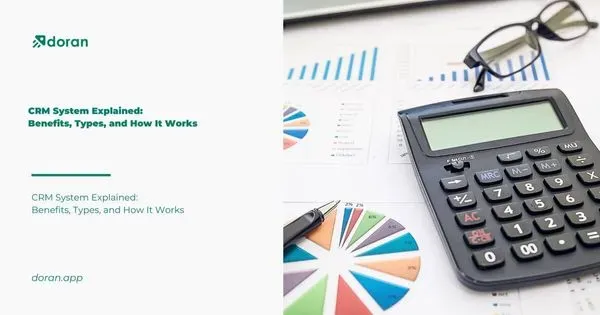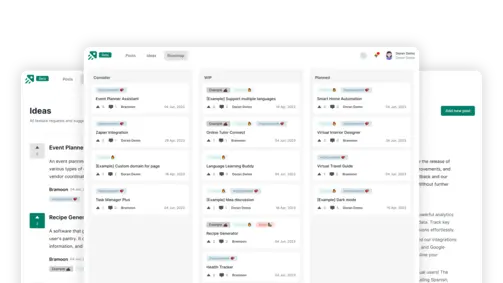How to Calculate NPS & What does NPS Stand for
Create changelog and product roadmap for your product
Explore nowTable of contents 7 min
- What is NPS score? Net Promoter Score definition
- How to Calculate NPS? The Formula for Calculating NPS
- How to Work Out NPS Based on Contribution of Drivers
- 5 Avoidable NPS Calculation Errors
- Posing an Inaccurate Questions
- Concentrating Only on the Score
- Not Dividing the Data into Segments
- Disregarding Detractors
- Not Following up with Promoters
Unlock the power of customer insights with our in-depth guide on how to calculate NPS. Net Promoter Score (NPS) is a key metric for gauging customer satisfaction and loyalty. In this article, we break down the intricacies of NPS calculation, providing a step-by-step guide for businesses looking to harness this valuable tool. Whether you’re a seasoned professional or new to the concept, this article is your go-to resource for understanding and implementing the NPS calculation process.
What is NPS score? Net Promoter Score definition
Understanding what Net Promoter Score (NPS) is crucial before jumping straight into how to calculate NPS.
First and foremost, what does NPS stand for? This metric, the Net Promoter Score (NPS), is known for its ability to gauge customer experience and forecast revenue growth. Calculating your total score involves surveying your customers with a single straightforward question:
“How likely are you to recommend [company name] to your friends, family, or business associates on a scale of 0-10?”
Identifying customers based on their feedback scores is crucial. Detractors rate you 6 or below, Passives rate you 7 or 8, and Promoters rate you 9 or 10.
How is NPS calculated? You gather individual results and measure the percentage of customers in each group.
When utilized properly, the final score becomes a key predictor of expansion as it gauges loyalty, impacting contract renewals and customer referrals.
Only NPS Promoter and Detractor play a crucial role in the NPS calculation formula.
How to Calculate NPS? The Formula for Calculating NPS
How to calculate NPS? To determine your Net Promoter Score, subtract the percentage of Detractors from the percentage of Promoters. Net Promoter Score is calculated by subtracting the percentage of detractors from the percentage of promoters.

For instance, if 50% of respondents are Promoters, 10% are Detractors, and 40% are passives, the NPS scoring would be calculated as 50-10=40.
But what is the ideal NPS score scale? The NPS metric was developed by Bain & Company, who suggest that while a score above 0 is positive, surpassing 20 is excellent and exceeding 50 is exceptional. Anything above 80 represents the highest percentile. It’s crucial to consider that a strong NPS score relies on whether you’re utilizing the absolute or relative NPS approach.
Find out more: Choosing the Right NPS Survey Tool for Your Business
How to Work Out NPS Based on Contribution of Drivers
Understanding how to calculate NPS is crucial, but it’s incomplete without an NPS driver analysis.
Drivers are what influence customers to assign a specific NPS score to your business. These components of an NPS survey are crucial as they reveal the areas of your CX that require enhancement.
You can determine these by incorporating one of two question types into your NPS survey. Following the Ultimate Question, inquire:
-
Open-ended questions: When a customer rates you highly, inquire about their favorite aspects of their interaction with your brand. By doing this, you will get a firsthand account of what made the experience unique.
-
Cascading questions: These are different types of survey questions given to customers depending on their answers to a previous question. One advantage is that they simplify the analysis of customer responses.
It is optimal for your drivers to be connected to various touchpoints in the customer journey, like purchase, customer support, or delivery.
If you happen to receive a lower score at one touchpoint, it’s important to be informed.
5 Avoidable NPS Calculation Errors
After knowing how to calculate NPS, let’s look at 5 mistakes that can be easily avoided but if encountered, it may lead to considerable consequences!
Posing an Inaccurate Questions
The NPS methodology involves posing customers with a single question: “How likely are you to recommend our product/service to a friend or colleague?” It’s straightforward and requires no further explanation. Keep the question as it is without adding extra information.
Some companies, unfortunately, ask irrelevant questions that are not related to the NPS. For example, customers may be requested to evaluate their overall satisfaction with the product or service or to give feedback on a particular feature. Although these inquiries offer valuable insights, they do not directly impact the NPS calculation and may influence the NPS score.
Feel free to ask a follow-up question to encourage respondents to provide more details about their choice, while keeping the initial closed-ended question as is.
Resolution: Just focus on the NPS question. Make sure to always ask customers the identical question to prevent distorting or weakening your results.
Concentrating Only on the Score

The NPS score is a valuable metric, but it’s essential to consider other measures of customer satisfaction as well.
By incorporating different metrics like the Customer Satisfaction Score (CSAT), Customer Effort Score (CES), and Voice of Customer (VoC), you can gain insights into the factors influencing your NPS score.
Read more: CSAT survey: Definition, Questionnaire, Templates & Examples
For example, if the NPS score is low, it’s important to understand the reasons behind customer dissatisfaction. Similarly, when the NPS score is high, it’s important to understand the factors that influence customer loyalty.
Tip: Begin with the NPS score and investigate further to uncover the factors influencing customer satisfaction. Gather more data to pinpoint areas that need enhancement, including feedback from customers, metrics on customer service, and data on product usage.
Not Dividing the Data into Segments
The NPS score offers a broad perspective on customer loyalty, yet its value can be enhanced by analyzing segmented data.
Breaking down the data based on customer demographics, product usage, or other factors can reveal patterns and trends that may not be apparent in the overall score. For example, you might notice a disparity in your NPS score between long-term customers and new customers.
Here’s a solution: Examine your NPS data based on customer segments to pinpoint strengths and weaknesses. This will assist you in customizing your efforts to enhance customer satisfaction and loyalty.
Disregarding Detractors

Customers who rate your product or service between 0-6 are considered detractors. Although it’s common to emphasize the promoters (9-10), detractors play a crucial role in the NPS calculation. They are frequently in danger of leaving and offer valuable insights on areas that require enhancement.
Solution: Communicate with detractors to identify the reasons for their dissatisfaction and resolve their issues. Ensure you close the feedback loop by acknowledging respondents’ opinions and providing solutions. This will enhance their satisfaction levels and boost the chances of them becoming advocates in the future.
Not Following up with Promoters
Customers who rate your product or service between 9-10 are considered promoters. These loyal customers are more inclined to recommend it to others. It’s essential to follow up with them to acknowledge that you’ve received their feedback.
Tip: Once you have gathered your findings, remember to contact your Promoters to express gratitude for participating in the survey.
Mastering the art of how to calculate NPS empowers businesses to quantify customer satisfaction effectively. As we conclude this guide, you’ll have gained the expertise to collect and analyze NPS data, fostering a deeper understanding of customer sentiments. By incorporating NPS into your strategy, you not only measure customer loyalty but also set the stage for continuous improvement, ensuring sustained success in today’s competitive market.
What to not miss out on our blog
Gain insightful knowledge and invaluable experiences from dedicated experts.

CRM System Explained: Benefits, Types, and How It Works
Discover everything about CRM system. Learn the benefits and how a CRM system works to improve customer relationships and streamline business operations.

Are you ready? Start your free trial today.
Enhance communication, keep track of the progress, understand customers' insight and more by taking your first trial on Doran.
Sign up for free

